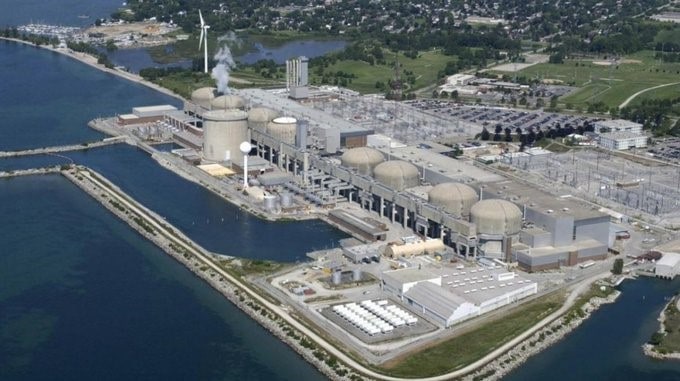Ontario government to refurbish Pickering Nuclear plant
Published January 30, 2024 at 9:59 am

The enthusiasm from Chris Keefer and the rest of the team at Canadians for Nuclear Energy was palpable, even on virtual social media.
After four years of lobbying the legislators, persuading the public and campaigning to Canadians about the economic and environmental benefits of nuclear energy, the Ontario government is set to announce the refurbishment of Pickering ‘B’ and its four reactors, a multi-billion dollar decision that will keep the station on the shores of Lake Ontario producing clean, green energy for decades to come.
“We CANDU’d It! We done did It! Pickering B is going to be refurbished! So proud of the team,” Keefer, a Toronto emergency room physician when he’s not campaigning for nuclear as the president of Canadians for Nuclear Energy, practically shouted on X (formerly Twitter) in advance of today’s 11 a.m. announcement.
Refurbishing Pickering is the sensible option, he added. “It avoids seven megatons of emissions per year, produces medical isotopes that sterilize 20 per cent of the world single use medical devices and provides 7,600 high quality full time equivalent jobs.
The four ‘B’ reactors, built in the 1980s, are still going strong and ran for 100 days straight last summer – “right through peak demand,” Keefer noted – until a planned outage in October.
“Their performance has never been better, despite being ‘old,” he said.
With demand for electricity on the rise and expected to double through the next quarter century, the provincial government and Energy Minister Todd Smith had little choice but to refurbish Pickering, he added.
“This has been something I have been advocating since the middle of the last decade,” Tom Hess, another member of Keefer’s nuclear lobbying group, said on X. “Most of the way, this seemed to be an insurmountable task. Joining with the fantastic team at Canadians for Nuclear Energy made all the difference! Never say never!”
The two remaining reactors at Pickering ‘A’ – built in the 1970s as Canada’s first nuclear power station – are still going but are scheduled to close later this year and are not part of the refurbishment.
Keeping those good energy sector jobs is one of the chief reasons for happiness for a Canadians for Nuclear Energy member that goes by the handle Happy Belmore. “Ultra-low carbon emissions, ultra-high job quality. That’s a potent win-win combo,” he said.
“This announcement is great news for the environment, even better news for tens of thousands of unionized Canadian workers in the nuclear energy industry.”
The provincial government has made several key nuclear sector announcements in recent years, notably the small modular reactor project underway at nearby Darlington (which is midway through its own $12.8 billion refurbishment that is so far on time and on budget), as well as a desire to add production at the Bruce plant, already the world’s largest.
It’s all part of a nuclear expansion with a price tag that could be in the hundreds of billions of dollars as Ontario prepares to power up the battery plants for the upcoming transition to electric vehicles as well the need for companies to meet their carbon emission goals.
“You can’t run those on wind and solar,” Keefer noted. “You can build an infinite number of wind turbines but they don’t show up when you need them. They’re fairweather friends.”
“Nuclear is reliable, long-lived and like a good friend, they are there when you need them.”
Smith, who will be in Pickering for the announcement, is on record as saying there is no way the Province can be ready for what is coming without nuclear energy.
Nuclear power already provides more than half of Ontario’s electrical needs, with newer sources, such as wind (nine per cent), solar and biofuel, less than ten per cent.
A report from Canadians for Nuclear Energy – The Case for Candu– declared that ramped up nuclear program using Canadian CANDU technology is the only way Ontario can meet its net zero commitments and be ready for the energy crunch. The quickest route to that goal, the group claimed in a 34-page manifesto released last May, is through at least ten new reactors, starting with a new build at the Darlington nuclear station.
Ontario’s Independent Electricity System Operator (IESO) also released a report last year calling for nearly 18,000 megawatts of new nuclear, the equivalent of more than four new plants, to ensure the province is clean, green and emissions-free by 2050.
The work to refurbish Pickering will begin in 2028, with the four ‘B’ reactors returning to service in the mid-2030s.
The proposal still has to go through the Canadian Nuclear Safety Commission for approval.






